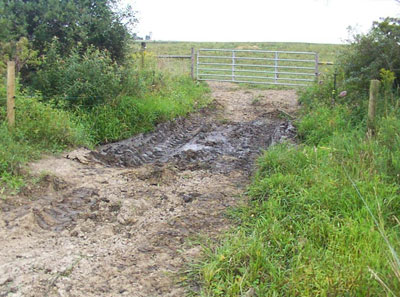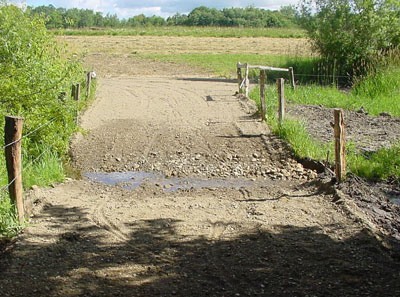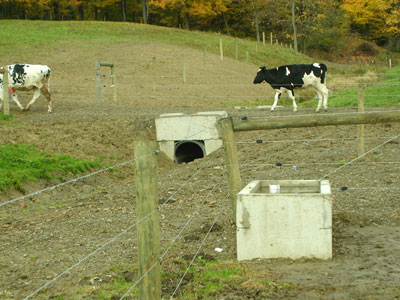Stream Crossings
Unstable stream crossings are prone to erosion and can become muddy and impassible. Without a stable area to cross streams, cattle can become muddy and exposed to waterborne bacteria which may cause black leg, mastitis, and other ailments and vulnerable to injury (slip & fall). Equipment can also become muddy and require additional maintenance.

BEFORE: The constant traffic of livestock and tractors has made this crossing a mess.
How is it addressed?
Stream crossings provide a stable place for cattle and equipment to cross waterways. Stream crossings are usually implemented along with stream bank fencing. Stream bank fencing helps restore vegetated stream buffers and ensures that cattle cross at the stabilized area. This dramatically reduces the impact that livestock have on the stream. Stream crossings are usually made so livestock still have access to the stream for drinking. When stream crossings are designed to completely remove livestock from the stream bed, spring developments and/or new watering facilities are installed.

AFTER: This stream crossing is solid and still provides a source of water for the cattle.

At this site, livestock and equipment now have a stable area to cross the stream and a new watering facility (foreground).
Approximate Cost = $3,500 per crossing
The result is:
- Improved herd health
- Landscape enhancement
- Improved wildlife habitat
- Improved water quality
- Reduced soil erosion & stream impact

